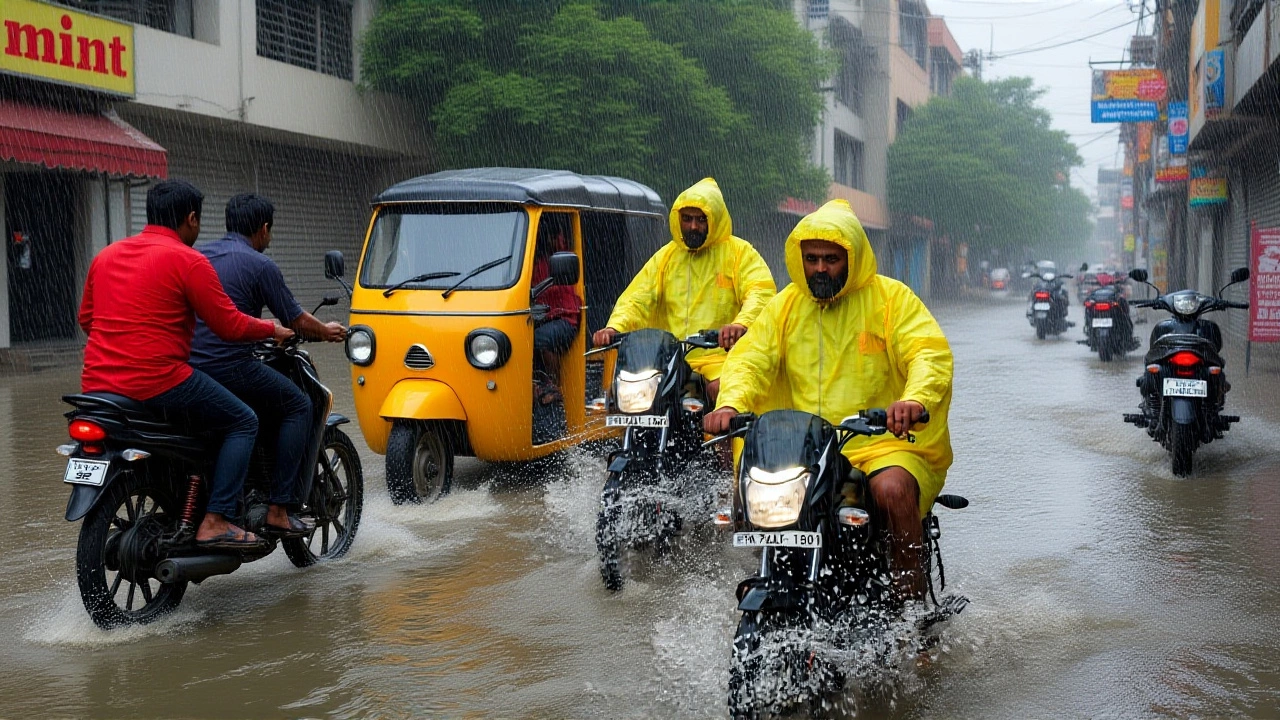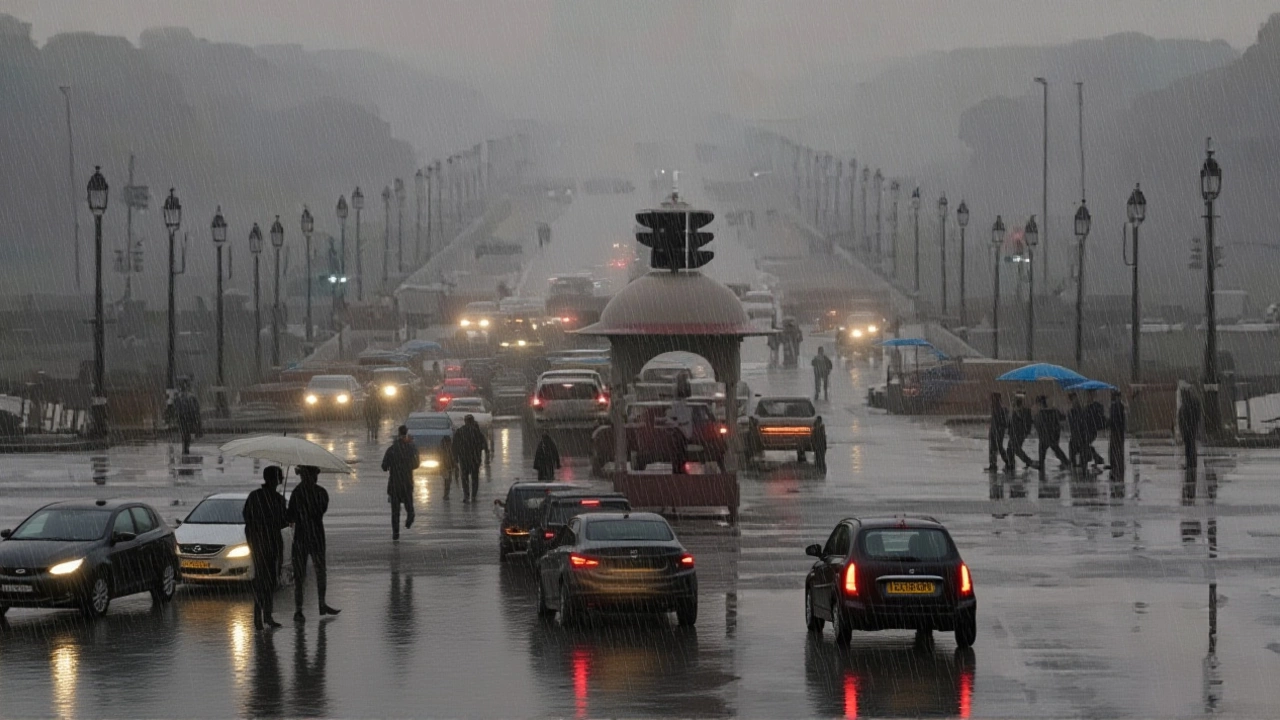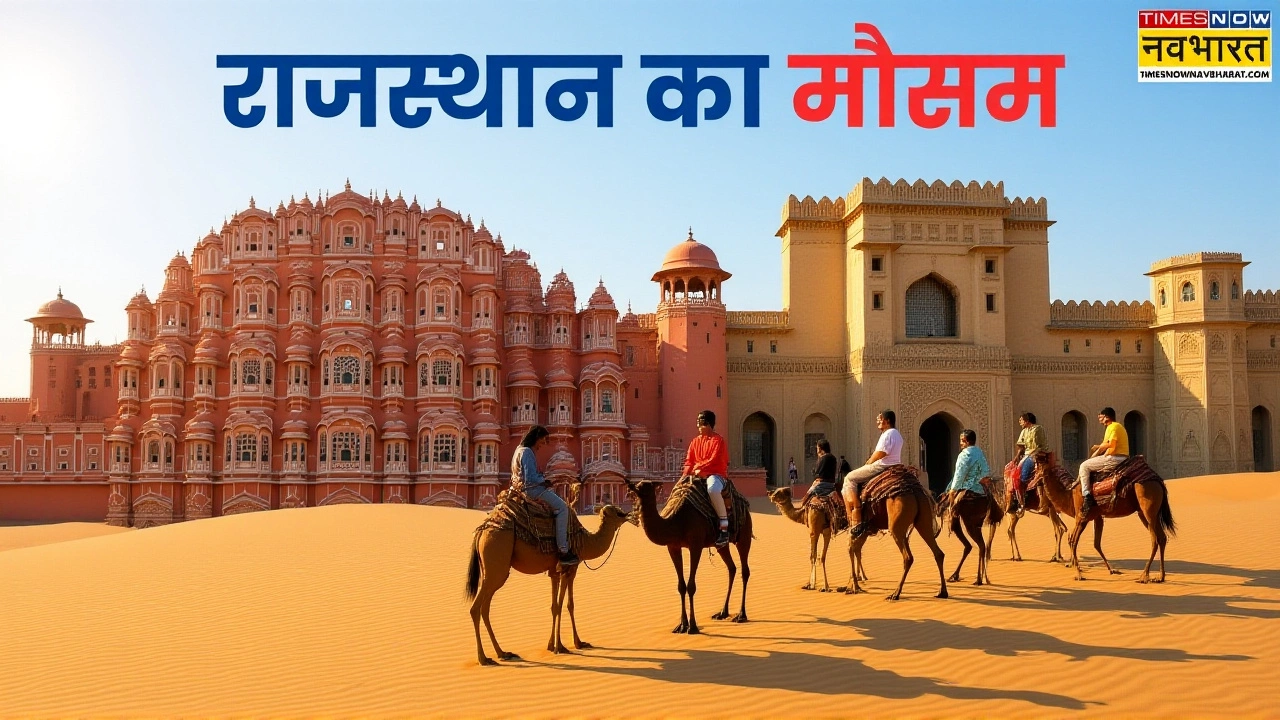When India Meteorological Department issued a rainfall alert for 23 districts of Rajasthan on October 28, 2025, at 1:45 p.m. IST, few expected the state to be hit by anything more than a passing cloud. But Cyclone Montha — spinning in both the Arabian Sea and the Bay of Bengal — had other plans. What followed wasn’t just rain. It was a weather earthquake. Daytime temperatures plunged by up to 8°C. Fields once golden with harvested crops turned soggy. And for farmers in Udaipur, Kota, and Pratapgarh, it felt like a betrayal.
What Happened in Rajasthan?
On October 27, the skies over Jaipur darkened by mid-afternoon. By nightfall, rain had settled in — not the brief, dusty showers Rajasthan sees in July, but a steady, soaking deluge that lasted through the next 36 hours. The hardest hit? Nainwa in Bundi district, where 101.6 mm (four inches) of rain fell in just 24 hours — more than the entire state usually gets in October. Meanwhile, Kota recorded a maximum of just 21.9°C, with the minimum holding steady at 21.6°C. No day-night difference. Just cold, damp stillness.
Across Udaipur, Chittorgarh, Alwar, Bhilwara, Ajmer, Karauli, and Dausa, temperatures dropped 6–8°C below seasonal norms. October, normally the start of Rajasthan’s crisp autumn, had become a wet, chilly mimic of December.
Why Is This So Unusual?
Rajasthan’s October is supposed to be dry. MakeMyTrip’s travel guide lists just 11mm of average rainfall for the entire month. Climate-Data.org, which typically forecasts clear skies and highs near 30°C, was caught off guard. Even Weather25.com had declared, "There shouldn’t be any rainy days in Rajasthan during October." Yet here it was — thunderstorms, gusts up to 40 km/h, and rainfall that defied every historical pattern.
The India Meteorological Department pointed to Cyclone Montha as the culprit. Though the cyclone’s core remained over the Arabian Sea and Bay of Bengal, its outer bands stretched across central India, pulling moisture into Rajasthan’s normally arid air. The result? A meteorological anomaly. "It’s not just rain," said one IMD official speaking anonymously. "It’s the wrong weather arriving at the wrong time. And it’s not just Rajasthan — the entire monsoon tail is misbehaving."

Farmers Bear the Brunt
The real cost? On the ground. In Udaipur and Baran, farmers had just finished harvesting mustard, gram, and millet. The crops were laid out to dry in open fields. Now, they’re waterlogged. Spoilage is inevitable. "I spent six months on this crop," said Harish Choudhary, a farmer from Pratapgarh. "Now it’s rotting in the fields. No one’s buying wet grain. And the government doesn’t compensate for weather this odd."
According to district agricultural offices, 1–3 inches (25.4–76.2 mm) of rain fell over key crop zones. That’s enough to ruin storage, trigger mold, and reduce market value by 30–50%. In Kota, grain traders reported a 40% drop in quality assessments. The state government has not yet announced relief measures — a delay that’s causing panic among smallholders.
Forecast: When Will It End?
The India Meteorological Department now predicts rainfall will linger until October 30, with possible isolated thunderstorms. After that, clear skies are expected. But the damage is done. The sudden chill has also triggered respiratory complaints in elderly populations across Ajmer and Bhilwara, according to local health centers.
Experts are now asking: Is this a one-off, or a sign of deeper climate shifts? "Rajasthan’s climate has always been resilient," says Dr. Meena Singh, a climatologist at Indian Institute of Tropical Meteorology. "But when a cyclone 1,500 kilometers away can dump monsoon-level rain in October — that’s not normal. We’re seeing patterns we didn’t model."

What’s Next?
By November 1, clear skies should return. But the uncertainty lingers. The IMD has already upgraded its seasonal outlook for November, warning of "higher-than-normal moisture influx" from the west. Farmers are being urged to dry stored grain with dehumidifiers and report crop losses immediately. Meanwhile, the state’s power grid is under strain — prolonged cloud cover has cut solar output by 22% in Jaipur and Kota since October 27.
For now, Rajasthan waits. The sun will come back. But the crops won’t. And the question remains: Was this a freak event — or the new normal?
Frequently Asked Questions
Why did Cyclone Montha affect Rajasthan when it was far away?
Cyclone Montha’s outer circulation pulled moisture from both the Arabian Sea and Bay of Bengal into a broad low-pressure trough stretching across central India. Rajasthan, though normally dry, lies in the path of these moisture-laden winds during unusual atmospheric setups. The system didn’t need to make landfall to dump rain — its sheer scale moved air and water hundreds of kilometers inland.
How unusual is 100mm of rain in Rajasthan in October?
Extremely. Rajasthan’s average October rainfall is just 11mm statewide. Nainwa’s 101.6mm in 24 hours is more than nine times the monthly average — and it’s the highest single-day October rainfall recorded in the last 37 years. Similar events occurred only twice before: in 1988 and 2018, both linked to rare monsoon remnants.
Which crops were most affected by the rain?
Mustard, chickpeas (gram), and bajra (pearl millet) were the hardest hit — all harvested just days before the rain. These crops are typically sun-dried on tarps or open ground. Wet grain develops mold, loses germination potential, and fetches 30–50% lower prices. In Udaipur and Baran, over 60% of stored harvests are now at risk.
Is this linked to climate change?
Scientists say yes — not directly, but through increasing atmospheric instability. Warmer sea surface temperatures in the Indian Ocean are fueling stronger cyclones with wider moisture reach. Rajasthan’s arid climate isn’t designed for such systems, making it more vulnerable to extreme, out-of-season events. The frequency of such anomalies has doubled since 2010, according to the Indian Institute of Tropical Meteorology.
Why didn’t weather apps predict this?
Most consumer apps rely on global models that prioritize coastal and high-rainfall zones. Rajasthan’s arid climate is often flagged as "low risk," so models downplay moisture influx. The IMD’s regional models caught it early, but public-facing apps like Weather25.com and EaseWeather.com didn’t update in time. This highlights a gap between official forecasting and public-facing tools.
What should residents do now?
Stay updated via IMD’s official app and local radio. Avoid travel on flooded roads — several highways in Chittorgarh and Dausa are already closed. Dry stored grains with fans or dehumidifiers. Elderly residents should limit outdoor exposure due to sudden chill. The IMD expects clear skies by November 1, but humidity may linger until mid-November.




